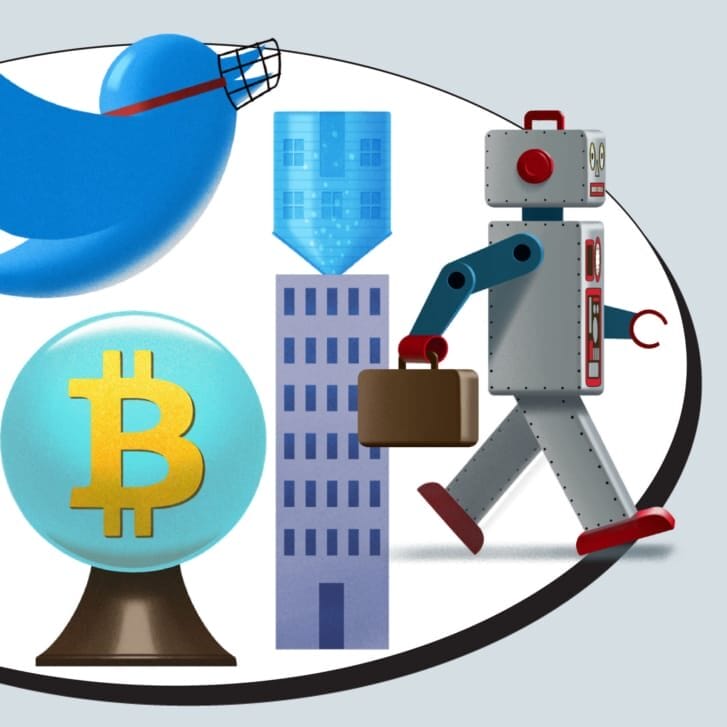Five years ago this past March, the World Health Organization declared COVID-19 a pandemic, and the world has never been the same. What began in December 2019 as a cluster of patients in Wuhan, China, with a mysterious pneumonia-like illness exploded into an existential threat that has killed more than seven million people. Life changed for everyone, practically overnight. Millions of workers lost their jobs as businesses shuttered, and those who were fortunate enough to work remotely had to adjust quickly to digitalization. Supply chains were disrupted, and economies were in turmoil. Health-care professionals faced unprecedented challenges caring for the sick while trying to protect themselves amid a shortage of equipment. The real estate market, particularly in the United States, transformed dramatically as prices rose along with interest rates. No country, no industry, no individual was left unaffected by the pandemic, in ways both large and small.
We asked a number of Wharton professors to reflect on these profound changes and how they continue to shape the world.
Economic Shocks Required Government Intervention — at a Cost
Itay Goldstein — Finance Department Chairperson; Joel S. Ehrenkranz Family Professor
The COVID crisis demonstrated that the economy faces multiple dimensions of fragility, and some are difficult to predict. When such an unpredictable crisis of this scope hits, it’s hard to expect the private sector to be able to sort it out, so government intervention is needed. As a result, a well-functioning, agile, and resilient government can be critical for dealing with shocks of the nature of COVID.
Close to my area of research, we have seen COVID leading to havoc in the financial system. Most notably, the bond market was shaken, exhibiting major outflows from bond mutual funds and causing a major spike in yields. A quick reaction of the Federal Reserve, providing liquidity and acting as buyer of last resort, was able to prevent a full-fledged financial crisis. The Federal Reserve was able to act so quickly partly due to lessons learned in the 2008 financial crisis, and I would expect it to attempt quick reaction in future episodes as well if financial stability at large is under threat.
One of the downsides of all the government stimulus and also of the expansive policy of the Federal Reserve was their contribution to the surge of inflation. Certainly, a lesson learned is that policymakers need to weigh the costs against the benefits — and on the cost side, inflation is a major factor to consider.

Real Estate Markets Remain in Turmoil
Susan Wachter — Co-Director, Penn Institute for Urban Research; Albert Sussman Professor of Real Estate; Professor of Finance
The pandemic vastly accelerated remote work technology. Office activity collapsed and is still at two-thirds of the 2019 level. This will be a lasting impact of the pandemic. Cities challenged by dead zones due to office and retail vacancy have only begun to creatively respond. The effort will be ongoing.
The pandemic also upended housing markets. The surge in demand for housing — first in response to the pandemic and then to the work-from-home option — has driven prices higher. Higher interest rates, a direct outcome of the pandemic and the fiscal and monetary stimulus and then tightening, together with these higher housing prices, have driven housing affordability down to levels not seen in 40 years. The [mortgage] lock-in effect has exacerbated lack of supply. Builders have responded with more construction. While the lock-in effect is likely to ease over time, higher prices and demand in excess of supply will continue to be challenges for first-time buyers for years to come.
From Communication to Networking, Office Culture Is Forever Altered
Maurice Schweitzer — Professor of Operations, Information, and Decisions; Cecilia Yen Koo Professor
The pandemic fundamentally transformed office culture. It normalized the idea of work-at-home. Many people believe that you can be just as productive, if not more, at home as you can be in the office. And many people then rearranged other aspects of their lives — for example, moving farther away or creating real home-office space. Many companies remain virtual for at least some employees for at least some of the time.
But work culture for junior employees is fundamentally different. By working at home, many junior and new employees lacked face-to-face interactions, missed opportunities for impromptu “watercooler” meetings, and struggled to get a sense of the broader company culture. For many companies, mentoring and building a company culture require special attention.
The pandemic also changed the nature of communication. Today, many people — even when they come into the office — end up on Zoom calls with clients and colleagues. We need to be tech- and media-savvy in ways that are different from before the pandemic. It made work less formal. By working with others via Zoom, we entered people’s living spaces and met their families and pets.
Most people experienced high levels of stress during the pandemic. Now, in a hyper-partisan environment, in the midst of massive government layoffs and uncertainty regarding funding for programs such as Medicaid, many people remain very anxious. At the same time, our capacity to contend with anxiety is better than it was before the pandemic. Online mental health therapy is now more prevalent, more likely to be covered by health insurance, and far more normalized. Similar things are true for medications to treat anxiety and depression. In addition, many people can do things that help them deal with stress, such as finding work-from-home jobs, moving closer to — or farther from — family, or moving to places that have lifestyle benefits.
Despite Lessons, Health Care Isn’t Ready for the Next Pandemic
Ezekiel Emanuel — Vice Provost for Global Initiatives; Diane v.S. Levy and Robert M. Levy University Professor; Professor of Health-Care Management
We learned about allocating scarce resources or rationing. We learned the ethical principles we need to bring to bear regarding which groups get priorities. That’s a big contribution, because it’s not just relevant to coronavirus and vaccines in a pandemic; it’s relevant to lots of other things. The exact same framework is useful for things like GLP-1 [medications] that are in shortage. I think we’ve also learned a lot about targeting high-risk groups and the implications of doing that. We have learned a lot about the need for data, the need for forecasting, the need to have good, resilient supply chains. That doesn’t mean we’ve actually put that knowledge into action.
We’re not keeping the infrastructure that we need to rapidly respond to threats, and I think that’s the worst outcome. I think hospitals are struggling. We’ve had a steady decline in the number of people admitted to the hospital. More and more care is being shifted out of the hospital to the outpatient setting. That makes the whole economic model of hospitals a little more difficult.
We’re not nearly prepared [for another pandemic]. The big problem there is going to be human resources. We work our medical staff to the bone, and there’s a lot of burnout.
Ingrid Nembhard — Fishman Family President’s Distinguished Professor; Professor of Health-Care Management
At the time of the pandemic, my co-authors and I suggested five tactics for health-care leaders and systems to use to navigate the demands: Put people first, manage operations creatively, attend to teamwork and communication, create outside partnerships, and embrace clear and humble leadership. The tactics that I see health-care delivery organizations continuing to try to orchestrate are the first two. Many have struggled with workforce well-being since COVID-19 — and, really, before that. They are working hard to try to support their workforces in order to retain them and have them provide quality care. I’m not sure that health-care organizations are managing more creatively, but I think they are trying to move in that direction.
We can build strength by continuing to embrace creativity through the policies and practices that we described. So much has happened, is happening, and will happen in health-care delivery in the years to come. We will continue to need creativity and commitment to workers, patients, and sustainability to meet the challenges.
AI Will Play a Bigger Role in Vaccine Development
Kartik Hosanagar — Co-director, AI at Wharton; John C. Hower Professor; Professor of Operations, Information, and Decisions
There are AI applications across the board, but the application that I find very interesting is in mRNA vaccine research. AI was already used a fair bit by companies like Moderna in quickly designing and testing mRNA vaccines. The use will only increase in terms of identifying targets and coming up with formulations using genetic data. AI can help optimize mRNA sequences to increase protein production in the body. There are also a number of AI-based tools, like RNAfold, DRFold, and mfold, that use AI to predict mRNA structures.

Pandemic-Era Changes to Retail Are Permanent
Barbara Kahn — Patty and Jay H. Baker Professor; Professor of Marketing
Probably the most enduring change in the retail landscape post-COVID is the move to omnichannel retailing — not online or offline, but a seamless integration between the two. Retail now is where consumers want to shop. Maybe they start online and then purchase in the store, or maybe they go back and forth, or start in the store and buy online — it doesn’t matter. From the shopper’s perspective, it is one integrative experience, which is very different from what it was like pre-COVID.
Other changes that occurred include the move to much more frictionless payment systems. Once shoppers experienced “tap to pay” or “buy now, pay later,” they never looked back.
The digital acceleration that happened because of the jolt of the pandemic is just one factor changing the scenery of retail. There are also economic pressures that caused consumers to be prudent with their dollars; the rise of the low-low-priced Chinese retailers like Shein and Temu; the concern with sustainability issues; the role of influencers who create memes that can make a new brand an overnight sensation. The death of the flagship department store is something else we are seeing. The beautiful landmark Philly Macy’s store and landmark Dallas Neiman Marcus store [have closed]. These historic department stores will be replaced by structures like multi-use retail/residential/workspaces.
Innovation and Productivity Accelerated Across Industries, but Not Equally
Serguei Netessine — Senior Vice Dean for Innovation and Global Initiatives; Dhirubhai Ambani Professor of Innovation and Entrepreneurship; Professor of Operations, Information, and Decisions
The pandemic caused an overnight shift that might otherwise have taken years to happen. Although this forced digitalization was initially disruptive, it has resulted in sustained efficiency gains across many industries. Firms that embraced digital transformation during the pandemic experienced higher revenue growth and improvements in operational efficiency compared to those that fell behind. Many organizations that adopted digital tools and remote work technologies saw lasting increases in productivity. Hybrid work arrangements, which became common during the pandemic, are expected to enhance productivity in the U.S.
However, not all firms and industries benefited equally from digitalization. Labor market disruptions have complicated the overall productivity landscape. The Great Resignation, skill mismatches, and changing work preferences have created bottlenecks in many sectors, particularly affecting lower-paid workers who didn’t have access to hybrid work arrangements.
Significant long-term changes also occurred in supply chains. The disruptions during the pandemic revealed vulnerabilities in global production networks, prompting companies to rethink their sourcing strategies, reshore production, diversify suppliers, and invest in automation. These changes are likely to provide long-term efficiency benefits and enhance the resilience of global supply chains.
We can also expect several lasting changes in business models. E-commerce and direct-to-consumer models have become more prominent, while contactless payments and digital banking have gained wider acceptance. Telehealth and digital health services have transitioned from being unusual to becoming standard practice. Gig work has become a dominant force, and online and hybrid education options have expanded rapidly. New business models have emerged, including ghost kitchens (delivery-only restaurants) and ghost retail (micro-fulfillment centers) designed to accommodate online orders. Virtual events and digital experiences have also come into existence. While it remains to be seen which of these business models will prove profitable, I am optimistic that many of them are here to stay.
Managers Must Learn to Navigate the New World
Michael Parke — Assistant Professor of Management; Charles W. Evans Distinguished Faculty Scholar
We’re going to continue working from home or places other than the traditional office more now than we did before the pandemic. This shift is here to stay, and it will continue to be a tension for organizational leaders to manage, whether they allow employees flexibility in where they work or mandate that they come into the office regularly.
It is an interesting tension, because multiple studies have reported that this shift to more remote and hybrid work has increased individual productivity across many jobs and industries. But the worry and concern for many leaders is that the switch to remote and hybrid work weakens collaboration, the organization’s culture, and creativity, which are needed to drive innovation. While these concerns have some legitimacy, they can also be overblown. My prediction is that there will be a handful of highly innovative organizations that “crack the code” and find the right balance between employee flexibility with remote work and maintaining strong cultures of collaboration and creativity. These organizations will then set the standard that other companies try to model and replicate.
Angie Basiouny is a former journalist who has worked as a freelance writer and editor with the Wharton School since 2015.
Published as “How COVID Changed the World” in the Spring/Summer 2025 issue of Wharton Magazine.


























